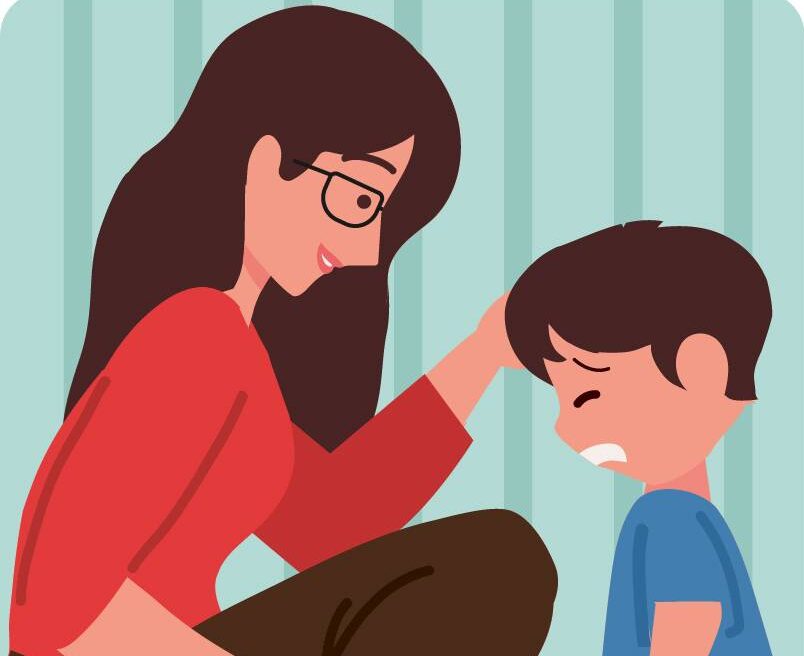Is it misbehavior or stress behavior?

As a mother of two, I’ve learned that what looks like “misbehavior” often isn’t. I wish I had known this earlier, especially when my kids spiral into chaos and I get into beast mode.
But as I learned from a webinar from Bright & Quirky, an online resource supporting families of bright children with attention deficit hyperactivity disorder (ADHD), anxiety, dyslexia and autism, we can’t always take everything at face value.
Perhaps we’ve asked our child to wait “just five minutes” before something exciting, like snack time. For a typically developing child, that wait might feel annoying but manageable. For a child with ADHD, five minutes can feel like an eternity. Their internal clock isn’t broken, it just runs on a completely different rhythm.
In his book “Self-Reg,” Dr. Stuart Shanker discussed how kids with sensory sensitivities and distinct internal clocks experience stress. These differences often get labeled as “misbehavior” when they’re actually “stress behavior.” This means the child isn’t acting out because they want to; they’re overwhelmed. Their brains are sounding the alarm, telling them they need to escape the overwhelming situation and the “misbehavior” is the smoke signal we should be paying attention to.
Understanding the V-curve
We can all relate to being pushed to our limits. For kids, especially bright and quirky ones, the pressure can build up fast.
Let’s say a child is in class, and the teacher keeps asking them to sit still, stop fidgeting and focus. But what the teacher doesn’t see is that this child is teetering on the edge of what’s known as the “V-curve,” a concept we can apply to stress behavior.
The more we push and fail to recognize their stress cues, such as the flushed face, restless movements or shaky voice, the closer they get to a meltdown. And when they hit that apex, the behavior looks explosive, defiant, uncontrollable.
When that happens, we often react with frustration and blame the child: “See what happens when you don’t control yourself?” But the child wasn’t misbehaving; they were in survival mode. How we respond to a child’s stressful behavior makes all the difference.
Stop managing behavior
Many parents and educators have been conditioned to believe that kids need to have their behavior “managed.” We have a set of rules, they’re expected to follow them. If they don’t, there are consequences. However, managing behavior is not the goal; understanding behavior is.
Take apraxia, for example, a neurological disorder where a child struggles to perform movements or tasks on command, even if they understand the request and want to comply. Can you imagine how stressful that must be? You know what’s being asked of you, you want to do it, but something in your brain just isn’t connecting the dots.
If the adults in your life are yelling at you, insisting you’re being difficult on purpose, that stress only multiplies. We miss the bigger picture. We suppress, undermine and in some cases, destroy the gifts that these kids naturally have.
As someone with Parkinson’s, I can relate to the frustration of knowing I have to pivot my foot to execute a kick correctly during taekwondo class, but sometimes there is a disconnect between my brain and body. There’s also the strangeness of being able to do complicated athletic moves but a slowness (even outright inability) to do everyday tasks such as unzipping a bag, turning a key or walking.
Change in perspective
As someone who’s weathered a few storms, one of the biggest lessons I’ve learned is to see what’s beneath the surface. When we take the time to understand why a child behaves a certain way, it changes everything, for you and your child.
Dr. Shanker mentioned a viral video of comedian Michael Jr. filming his newborn baby daughter moments after birth. She’s crying on a cold, sterile table, but the second he speaks to her softly, reassuring her that “Daddy’s here,” she stops crying immediately. There’s something so deeply primal about being understood and feeling safe.
The same principle applies when dealing with stress behavior in children. The next time your child is on the verge of a meltdown, try to pause. Instead of managing the behavior with a punishment or stern words, get curious. What is this behavior trying to tell me? Is this child feeling overwhelmed? Frustrated? Anxious?
When you approach them with calmness and empathy, something happens to the child and you. Your brain relaxes, your gestures soften and the energy you radiate shifts. You become that source of security and safety, like Michael Jr. in the video, reassuring a distressed child that they’re not alone.
Kids, especially those with neurological differences, don’t act out to make life difficult for us. They’re not trying to test our patience, though it feels that way. What they need is to feel seen, understood and safe.
If we continue treating stress behavior as misbehavior, we miss the mark and the opportunity to nurture the gifts that make our kids unique.
Bright & Quirky provides online psychoeducation to help families overcome learning, social and emotional challenges, empowering them to live happier, more productive lives.

















